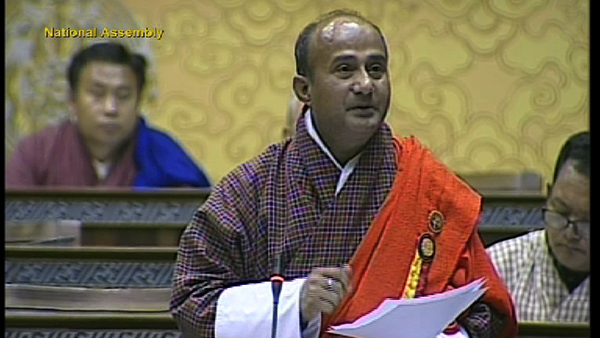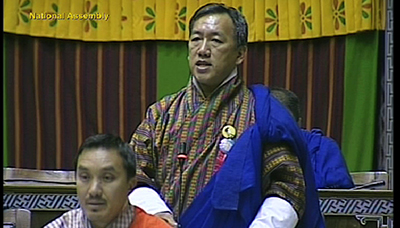 To solve the problems related to Liquefied Petroleum Gas (LPG) cylinders in the country, the Ministry of Economic Affairs plans to set a uniform price for subsidised and non-subsidised LPG cylinders very soon.
To solve the problems related to Liquefied Petroleum Gas (LPG) cylinders in the country, the Ministry of Economic Affairs plans to set a uniform price for subsidised and non-subsidised LPG cylinders very soon.
The economic affairs minister said the idea is currently in the planning stages during the question hour session of the National Assembly, today.
During the question hour session of the National Assembly today, the minister for Economic Affairs was questioned on numerous and frequent problems related to LPG cylinders.
“These days the main problem our people are facing is the shortage of LPG cylinder. The quota of 700 metric ton of subsidised cylinders per month was increased from 500 MT during the first government’s term in 2009. It’s high time to initiate talks with the government of India to increase the monthly quota by the government of the day to solve the problem,” Dorji Wangdi, the Panbang Member of Parliament said.
 “Tashi distributors used to be the sole LPG agent in the country. The decision by the second government mandating the supply of LPG cylinders by the specific oil distributors. If the oil in a region is distributed by Damchen Petroleum, then LPG cylinders should also be distributed by it. At one hand we are talking about not allowing monopoly, at another, we are practising this. If both distributors are allowed to handle LPG cylinders whether they have an oil station in the region or not, the problem might not be this serious.”
“Tashi distributors used to be the sole LPG agent in the country. The decision by the second government mandating the supply of LPG cylinders by the specific oil distributors. If the oil in a region is distributed by Damchen Petroleum, then LPG cylinders should also be distributed by it. At one hand we are talking about not allowing monopoly, at another, we are practising this. If both distributors are allowed to handle LPG cylinders whether they have an oil station in the region or not, the problem might not be this serious.”
In response, the economic affairs minister Loknath Sharma said lack of policy with regard to the entitlement of Subsidised and Non-subsidised gas cylinders is one of the main reasons for the shortage of gas cylinders supply in the country, today.
“In 2017, subsidized gas cylinders were supplied and distributed in rural areas and since then the problem has started. Because during that time if we had a policy or rule stating that the subsidised gas cylinders were for the rural people and the non-subsidised gas cylinders for people residing in urban areas, then we might not have faced this problem today. Today, everyone is rushing for the subsidized gas cylinders,” the minister said.
He assured the ministry is doing their best to solve the problem and have also requested the government of India to raise the existing monthly quota.
“We are aware of the problem and we even requested the Indian government to increase the monthly quota for subsidised LPG cylinders to 1000 metric ton, a month ago. In the population and housing census of Bhutan 2017, we saw an increase in the number of households from 126,115 to 163,001. Looking at the number of households against the monthly quota, only about 30 per cent can get the subsidised cylinder in a month.
He added that the government has tried to make urban residing people to go for the ‘green gas’ (unsubsidised gas) cylinder by setting an example from the PM, Cabinet, Speaker, Chairperson and the Opposition Leader all surrendering their subsidised cylinders and buying the unsubsidised one. The move failed to change the mindset of the people and the government is left with an only option;
“Now what we are planning to do is, we are thinking of making the prices of both subsidised and non-subsidised gas cylinders the same. We are in the initial stages as we never know how it might work. Not only that we are also promoting electrical cookers and oven. And in rural areas, we are planning to further promote biogas and innovative ovens,” the minister added.
Today, Bhutan receives 700 MT of subsidised gas cylinders, 1000 MT of non-subsidised gas cylinders and 500 MT of commercial LPG cylinders every month from the government of India.







